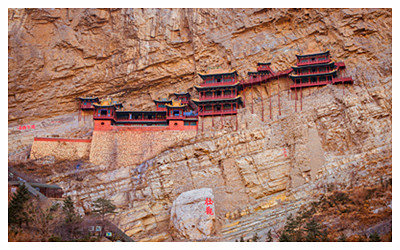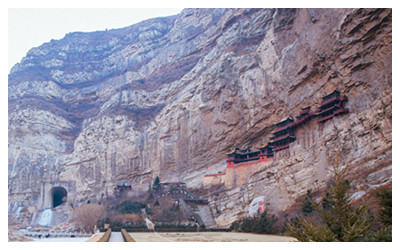Skype: neodalle-travel
Tel: +86 135 7447 2266
E-mail: sales@visitaroundchina.com
 Hanging Monastery (Xuankong Si) is located at the foot of Hengshan Mountain, 5 kilometers south of Hunyuan County, and 65 kilometers from downtown Datong City. Because it hangs on the west cliff of Jinxia Gorge more than 50 meters above the ground, it is called Hanging Monastery.
Hanging Monastery (Xuankong Si) is located at the foot of Hengshan Mountain, 5 kilometers south of Hunyuan County, and 65 kilometers from downtown Datong City. Because it hangs on the west cliff of Jinxia Gorge more than 50 meters above the ground, it is called Hanging Monastery. Why build a monastery like this? Location is the first reason; building a monastery on the cliff could shield it from floods. In addition, the mountain peak protects it from rain and snow; and the mountain around it also diminishes damage from long-time sunshine. The second reason is that the builders followed a principle in Taoism: no noises, including those from rooster crowing and dog baying; so from the upper ground, all noises drop away.
Why build a monastery like this? Location is the first reason; building a monastery on the cliff could shield it from floods. In addition, the mountain peak protects it from rain and snow; and the mountain around it also diminishes damage from long-time sunshine. The second reason is that the builders followed a principle in Taoism: no noises, including those from rooster crowing and dog baying; so from the upper ground, all noises drop away.Travel Tips
Add: at the foot of Mt. Hengshan, 5 kilometers (3 miles) south of Hunyuan County, and 65 kilometers (40 miles) from downtown Datong City.
Entrance Fees: CNY 130
Opening Hours: :08:00-17:00
 Ask Questions ?
Ask Questions ?